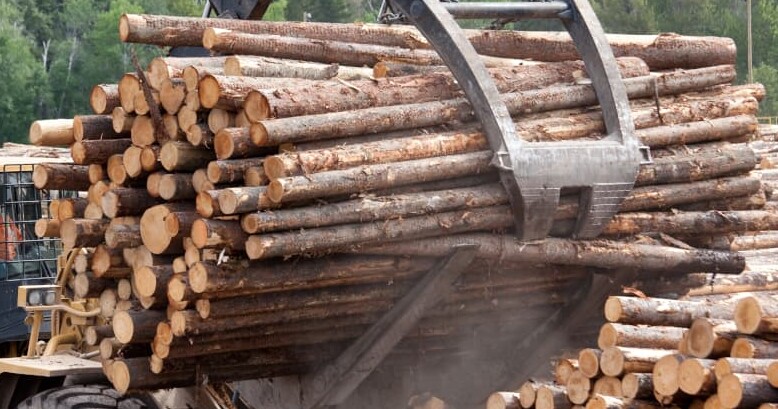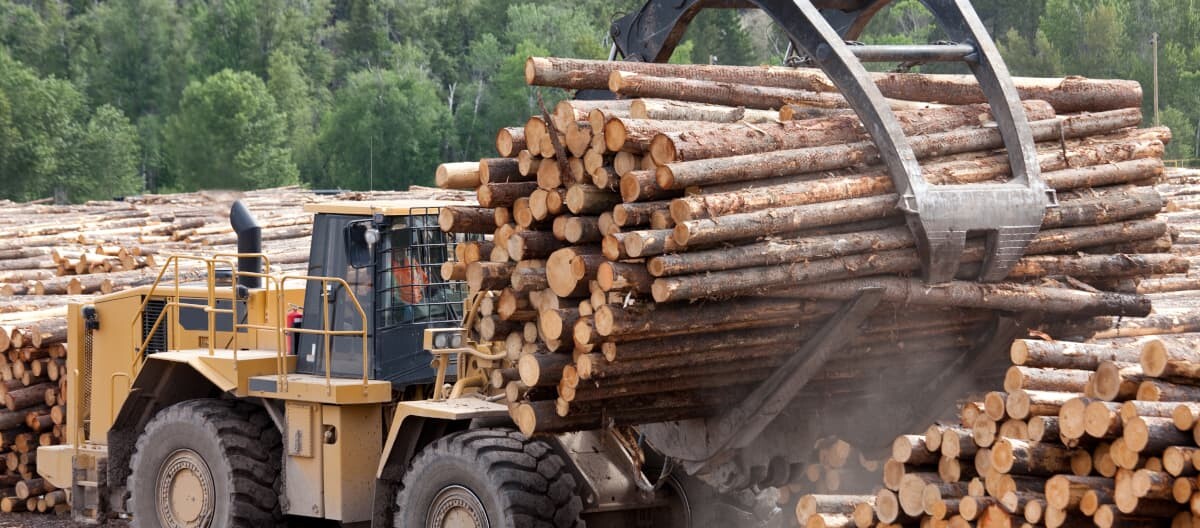Table of Content
- A Crisis Mood in the Wood Industry
- The Export Problem
- Study: Wood Production Could Fall Even Further
- Wood Shortage: Ecological Alternatives Are Gaining Ground
A Crisis Mood in the Wood Industry
The wood industry across Europe is still stuck in crisis mode. Wood as a raw material remains scarce, which has already led to production cuts and could lead to more in the near future.
Industry associations in several EU countries warn that shorter working hours in wood-processing companies can no longer be ruled out.
Sawmills in many parts of Europe are facing the same difficulties, especially when it comes to getting enough softwood from local forests for domestic processing.
Ongoing supply chain disruptions are making things even tougher. The numbers speak for themselves: according to Eurostat, roundwood production in the EU dropped to about 510 million cubic meters in 2024, a decrease of 6.8 percent compared to the previous year.
Price trends tell a similar story. Producer prices for wood and wood products across the EU were on average 7 to 8 percent higher in 2025 than the year before.
At the same time, import prices for softwood logs jumped by 26 percent in the first half of 2025, while import volumes increased by around 5 percent.
The Export Problem
Another factor is making the situation even tougher. Despite the ongoing shortage, wood is still being exported, including to China and other major markets outside the EU.
Recent trade data shows that the EU remains a net exporter of roundwood, with a surplus of about 12.5 million cubic meters. At the same time, more than half of the wood processed in the EU now comes from imports.
In other words, European companies continue to deal with supply shortages while large quantities of wood keep leaving the region. Since the EU still has no effective export restrictions on raw materials like wood, many processors are having to compete in an increasingly competitive global market.

Study: Wood Production Could Fall Even Further
The outlook for Europe’s wood industry isn’t getting any brighter. As part of its biodiversity strategy, the European Commission has introduced ambitious goals that also affect how forests are managed and how wood is used.
These measures aim to better protect ecosystems but could also have major consequences for wood production.
A recent study called “Assessment of Possible Production Leakage from Implementing the EU Biodiversity Strategy on Forest Product Markets” paints a concerning picture.
In one of its model-based scenarios, the authors predict that roundwood production in the EU could drop by as much as 48 percent by 2030 if the proposed protection measures are fully implemented.
About half of that decline would likely be made up for through additional imports from non-EU countries. At the same time, the production of sawn timber, wood-based materials and pulp within the EU would fall significantly.
What’s meant to help the environment could, according to the study, have some unintended consequences. If wood products become harder to get and more expensive, they might increasingly be replaced by materials like concrete, steel, or aluminum.
These materials, however, produce far higher emissions during manufacturing than wood products do. This means that while the biodiversity benefits could be real, they might also come with a worse climate balance in other areas.
The study highlights the need for a careful balance between protecting biodiversity and ensuring raw material supply so that environmental and economic goals can work together in the long run.

Wood Shortage: Ecological Alternatives Are Gaining Ground
With wood becoming harder to find, alternative materials are playing a bigger role in many industries. More and more homeowners and companies either can’t afford wooden parquet floors anymore or find that their preferred type is sold out.
That’s why many consumers are now turning to linoleum floors. Linoleum is made from linseed oil mixed with wood or cork flour and other natural ingredients.
Cork is another great sustainable option for flooring since it’s made from tree bark that grows back quickly, so the trees don’t have to be cut down.
In construction, polymer-based materials are proving to be a practical alternative to wood. They’re easier to work with and not as sensitive to moisture. Materials like wood concrete, sand-lime brick, hemp lime and clay are also being viewed as promising building materials for the future.
When it comes to heating, bark briquettes are another smart option. They’re made from waste produced during industrial wood processing. Once the bark is shredded, dried, and pressed into briquettes, it actually performs better than well-seasoned firewood thanks to its lower moisture content.

Conclusion: Wood remains scarce, alternatives are gaining ground
The shortage of wood isn’t going away anytime soon. Rising prices and limited availability are forcing both businesses and consumers to find new solutions.
At the same time, the pressure on the industry is driving innovation. Sustainable substitute materials are evolving from niche products into real alternatives.
Those who adapt early and stay flexible can better cushion supply bottlenecks and even operate more sustainably in the long run. The future lies in a more mindful use of resources and in the willingness to rethink how we use wood.
For more information on construction and economics, read these insightful articles:
Wood's Comeback in Modern Architecture
Sustainable Style in Residential Design
the technical aspects of various wallpaper types
Beyond Paint: Transforming Houses with Wallpaper
The Modern Metal Construction and the future of construction

